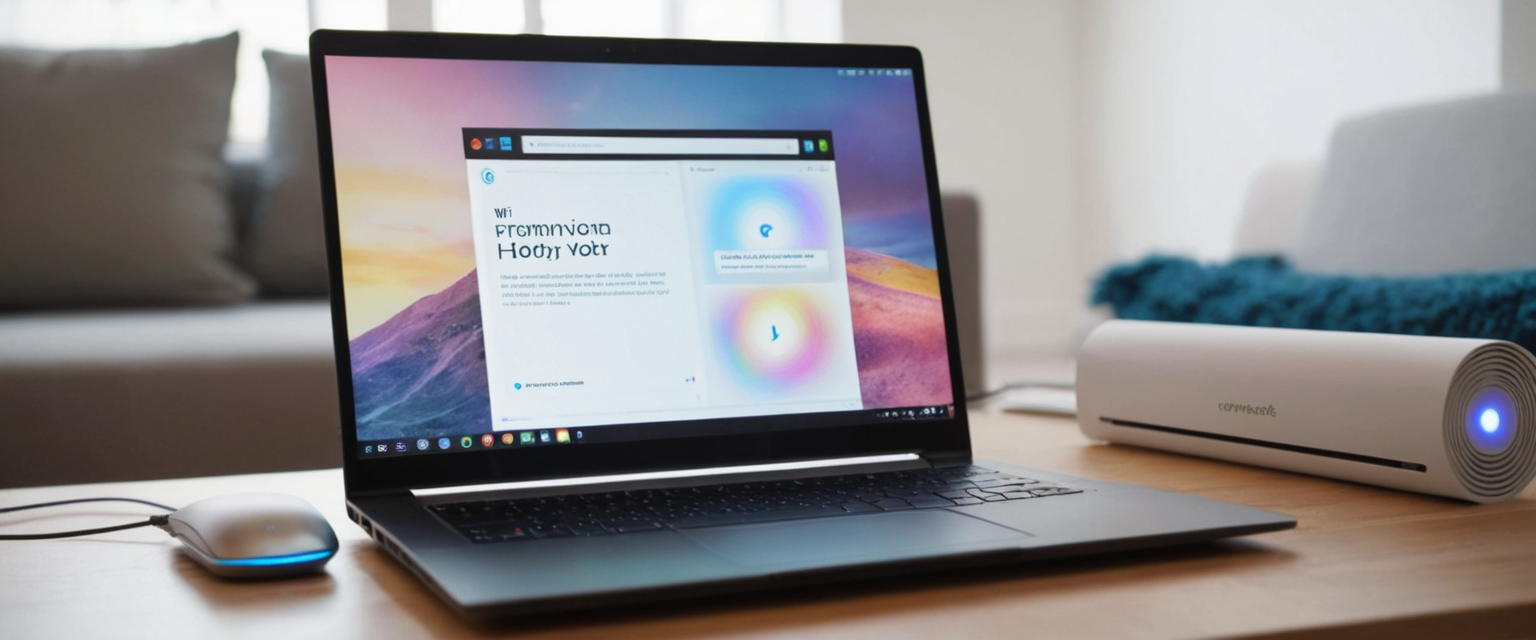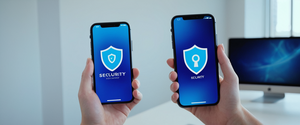
Virtual Private Networks (VPNs) represent one of the most practical and widely-used technologies for protecting online privacy in contemporary digital environments. When examining the specific question of whether VPNs hide browsing history from WiFi owners, the answer is definitively affirmative, though the reality encompasses important nuances that merit thorough examination. VPNs accomplish this protection through sophisticated encryption mechanisms that prevent network administrators from viewing the specific websites users visit, search terms they enter, or the detailed content of their online activities, while simultaneously replacing a user’s real Internet Protocol address with that of a VPN server located elsewhere. However, this comprehensive report will demonstrate that while VPNs provide robust protection against WiFi owner surveillance, the technology operates within certain constraints, and WiFi owners retain visibility into certain aspects of network activity, such as the fact that encryption is occurring and general bandwidth consumption patterns. Understanding both the capabilities and limitations of VPN technology is essential for users seeking to maintain privacy on networks they do not control, whether in homes, workplaces, educational institutions, or public spaces.
Unencrypted Internet Traffic and WiFi Owner Visibility
Before examining how VPNs alter the landscape of network privacy, it is essential to comprehend what happens when users browse the internet without employing any privacy-enhancing technologies. When a user connects to a WiFi network and accesses the internet without a VPN, all their internet traffic passes through the router that creates and manages the wireless network. The WiFi owner or network administrator with access to the router’s administration interface possesses the technical capability to view comprehensive logs of online activity, creating a complete and detailed record of the user’s digital behavior. This visibility includes the specific websites visited through their domain names or uniform resource locators, the exact time each website was accessed, the duration of each session, and in many cases, the unencrypted content exchanged with servers that use older HTTP protocols rather than the more secure HTTPS standard. Additionally, network administrators can observe the applications installed on connected devices, the volume of data transferred during each internet session, and the MAC addresses that uniquely identify each device connected to the network.
The mechanisms by which WiFi owners gain this extensive visibility are rooted in fundamental networking architecture. When using an unencrypted network connection, internet traffic passes through the router as part of the normal data transmission process. The router, as the central hub directing all network communications, can log information about traffic flowing through it, storing this data in logs that the network owner can access through the router’s administration console. Even incognito mode or private browsing settings on a user’s device provide no protection against this monitoring, as these features only prevent the local device from storing browsing history; they do nothing to encrypt data before it leaves the device and travels through the router. For users who visit websites using the older HTTP protocol without encryption, the situation becomes even more precarious, as network administrators may be able to view the actual content of communications, not merely which websites were visited. This represents a significant privacy vulnerability for individuals using shared networks in workplaces, schools, dormitories, hotels, cafes, or any other environment where a network is managed by someone other than the user themselves.
The privacy implications of this unrestricted visibility have motivated various concerning practices among network operators and internet service providers. ISPs can track browsing history and have been documented using this information to target users with advertisements, sell aggregated data to third parties, or provide information to government authorities. The economic incentives surrounding data collection have created a market for user browsing information, with ISPs and other network operators viewing this data as a valuable commodity. Furthermore, the centralized storage of extensive browsing records creates attractive targets for cybercriminals seeking to breach network infrastructure and steal accumulated user data. Historical precedent demonstrates that such breaches occur with disturbing regularity, compromising the personal information of millions of users whose browsing histories and other sensitive data were inadequately protected by network operators.
The Encryption Mechanism: How VPNs Hide Browsing History
Virtual Private Networks accomplish the hiding of browsing history through a sophisticated process of encryption that transforms internet traffic from readable plaintext into indecipherable ciphertext before it leaves the user’s device. Understanding this encryption process requires examining both the fundamental cryptographic principles underlying VPN operations and the specific architectural implementation of VPN services. When a user enables a VPN on their device, every piece of internet traffic generated by that device becomes subject to encryption using mathematical algorithms that scramble the data into forms that cannot be read without possession of the appropriate decryption key. This encryption process occurs on the user’s device itself, before data ever reaches the router or any other network infrastructure, ensuring that routers and network administrators cannot examine the encrypted contents even if they intercept the data.
The architecture of VPN services creates an encrypted tunnel through which all encrypted traffic flows from the user’s device to the VPN provider’s servers, which may be located in entirely different geographic regions. This encrypted tunnel functions analogously to a secure conduit through which data travels, remaining inaccessible to anyone who might attempt to intercept it during transmission across the internet. The encryption algorithms employed by modern VPN services typically utilize Advanced Encryption Standard with 256-bit keys, often referred to as AES-256, which represents the highest level of encryption commonly available to civilian users and provides security comparable to military-grade encryption standards. With AES-256 encryption, the computational effort required to decrypt data through brute-force attacks would require such an astronomical amount of time and processing power that the encrypted data becomes effectively unreadable for any practical purpose.
Once the VPN server receives the encrypted traffic from the user’s device, the server possesses the decryption keys necessary to convert the ciphertext back into readable plaintext. The VPN server then forwards this decrypted traffic to the destination website or service, but critically, the traffic now appears to originate from the VPN server’s IP address rather than from the user’s actual device. This means that from the perspective of websites receiving the user’s requests, the communication is coming from the VPN server’s location rather than the user’s true geographic location. This dual action of encryption and IP address substitution creates the privacy protection that VPNs provide: WiFi owners cannot see the encrypted contents of the traffic, and websites cannot identify the user’s actual location or device.
The consequence of this encryption and tunneling arrangement is comprehensive concealment of the user’s browsing activity from the WiFi owner or network administrator. Because the traffic passing through the router is encrypted, the network administrator cannot determine which specific websites are being visited, what search queries are being performed, what files are being downloaded, or what content is being accessed on those websites. The encrypted tunnel obscures all these details, leaving the WiFi owner with visibility only into the fact that encrypted traffic is being transmitted and general information about the volume of data being transferred. For a user concerned about privacy from a WiFi owner, this represents dramatic improvement over the unencrypted scenario, where every detail of online activity is exposed.
What WiFi Owners Still Observe When VPNs Are Active
Despite the comprehensive encryption provided by VPNs, the technology does not render network administrators completely blind to all aspects of user activity. Even with a VPN active and encrypting all traffic, WiFi owners retain the ability to observe certain categories of information that exist outside the encrypted tunnel. Most notably, network administrators can definitively determine that a VPN is being used, as the distinctive patterns and characteristics of VPN traffic create recognizable signatures that modern detection tools can identify. VPN traffic typically flows to a single IP address corresponding to the VPN provider’s servers, whereas normal internet traffic flows to many different destination IP addresses as the user visits different websites. This concentration of traffic to a single destination is characteristic of VPN usage and represents a red flag to network administrators examining traffic patterns.
Furthermore, WiFi owners can observe the volume and timing of data transmission without being able to examine the actual content of that data. By monitoring how much data flows in and out of a user’s device, network administrators can make educated guesses about the user’s activities; for instance, streaming video generates substantially more data than ordinary web browsing, and downloading large files creates distinctive bandwidth spikes. However, they cannot determine the specific source or nature of this data transfer when it is encrypted within a VPN tunnel. WiFi owners can also observe when the VPN connection is established and terminated, creating a complete record of when the user was utilizing the VPN service, though this reveals nothing about what the user was doing while connected.
Some sophisticated network administrators employ advanced detection techniques to gather additional information about VPN users. Deep Packet Inspection, discussed in greater detail in subsequent sections of this report, represents one such advanced technique that allows network administrators to analyze the structure and patterns of encrypted packets to identify VPN protocols. Additionally, administrators can monitor the specific ports and protocols used by VPN connections; for example, many VPN services use recognizable port numbers such as UDP port 51820 for WireGuard or ports 500 and 4500 for IKEv2, allowing administrators to block traffic on these ports if desired. Network administrators can also track the MAC addresses of devices connecting to the WiFi network, building a record of which devices are present and active on the network. However, none of these detection methods allow administrators to see the actual encrypted contents of the VPN traffic or the specific websites and services the user is accessing through the VPN.
Technical Comparison: WiFi Owner Visibility Without and With VPN
To fully appreciate the privacy protection afforded by VPNs, a detailed comparison of WiFi owner visibility in both scenarios illuminates the dramatic difference encryption makes. Without a VPN in place, the WiFi owner has access to an extensive array of information about each user’s online activities. The network administrator can view the complete list of websites visited, including specific page URLs when available, the search terms entered into search engines, the files downloaded to the device, the applications used to access network services, login credentials entered on websites using unencrypted HTTP protocols, and personal information transmitted through unencrypted communications. The router logs maintained by most networks create a detailed chronological record of this information, establishing a comprehensive audit trail of the user’s digital behavior throughout their time connected to the network.
When a VPN is active, this comprehensive visibility is dramatically reduced. The WiFi owner can no longer view which specific websites are visited, as this information is encrypted and travels through the VPN tunnel. Search queries are completely hidden from view, as they are encrypted before leaving the user’s device. Downloaded files are concealed by encryption, and the WiFi owner cannot determine what content is being accessed. Login credentials are protected by encryption, preventing interception and theft. Personal information transmitted through internet communications remains secure, hidden behind the encryption provided by the VPN. The fundamental architecture of VPN encryption ensures that the actual content of the user’s internet communications is inaccessible to anyone without the decryption keys, which only the legitimate user and the VPN provider possess.
The practical implications of this privacy protection extend across numerous contexts. A student using a school WiFi network gains protection from monitoring by school administrators, allowing them to research topics of personal interest without surveillance. An employee using a workplace WiFi network gains protection from employer monitoring, enabling private communications and personal browsing during breaks without fear of discovery. A guest using someone else’s home WiFi network gains protection from the host’s surveillance, maintaining privacy during their visit. In all these scenarios, the VPN fundamentally transforms the privacy dynamics by making the user’s online activities invisible to the WiFi owner, despite all traffic flowing through the owner’s router.
VPN Provider Access and the Trust Factor
While VPNs provide excellent protection against WiFi owner surveillance, an important and frequently overlooked consideration involves the capabilities and practices of the VPN provider itself. Because the VPN provider’s servers decrypt the user’s encrypted traffic to forward it to its destination, the VPN provider theoretically possesses the technical capability to inspect, log, and potentially misuse this traffic. In theory, every VPN provider could potentially see everything the user does online through their service, creating a situation where the user trades protection from one observer (the WiFi owner) for potential vulnerability to another observer (the VPN provider). This reality makes the selection of a trustworthy VPN provider critically important, as the user’s privacy ultimately depends on the VPN provider’s integrity and adherence to its stated privacy policies.
Reputable VPN providers address this concern by implementing strict no-logs policies, which represent commitments to not collect, store, or retain records of users’ internet activities while connected to the VPN service. These no-logs policies typically extend to three categories of information: activity logs recording which websites users visit and what they do online, connection logs recording the times users connect and disconnect and the volume of data transferred, and aggregated logs tracking general usage patterns. Top-tier VPN providers have submitted to independent third-party audits where security experts examine the provider’s infrastructure and systems to verify that the stated no-logs policies are actually implemented in practice. For instance, companies like Proton VPN, NordVPN, and ExpressVPN have undergone multiple independent audits by respected security firms that confirmed the absence of user activity logging despite the technical capability to collect such information.
The jurisdiction in which a VPN provider operates also influences the practical protection afforded to users. VPN providers headquartered in countries with strong privacy laws and absent government surveillance demands provide greater protection than providers in countries with extensive government surveillance programs. A VPN provider operating under the legal framework of Switzerland, for example, operates within a country recognized for privacy protections and no tradition of mandatory surveillance of internet communications, providing greater assurance that user data will not be surrendered to government authorities. Conversely, a VPN provider operating in a jurisdiction with mandatory data retention laws or close government relationships may face legal or political pressure to compromise user privacy, regardless of stated no-logs policies.

VPN Detection Methods and Their Implications
Despite the encryption and anonymization VPNs provide, various detection methods have been developed that allow networks, websites, and service providers to identify when users are employing VPN services. Understanding these detection methods provides important context for considering the limitations of VPN protection and the practical vulnerabilities that VPN users may face in certain contexts. The most straightforward detection method involves maintaining databases of known VPN provider IP addresses and blocking traffic from these addresses, a technique employed by many streaming services that use geolocation restrictions. When a user connects through a known VPN server, their traffic originates from an IP address recognized as belonging to a VPN provider, triggering blocking mechanisms that prevent access to the restricted service.
Deep Packet Inspection, a more sophisticated detection technique, involves examining the detailed structure and patterns of encrypted network packets to identify the VPN protocol being used, even without decrypting the packets themselves. Different VPN protocols create distinctive signatures in the patterns of packet sizes, transmission intervals, and encryption characteristics that sophisticated analysis can identify. ISPs and advanced network administrators employ Deep Packet Inspection to recognize VPN usage and potentially block or throttle VPN connections, a particularly significant concern in countries with restrictive internet policies. GPS data represents another detection vector, particularly relevant for mobile applications; when an app determines a user’s location through GPS and compares it to the geographic location associated with the user’s apparent IP address, mismatches can suggest VPN usage.
WebRTC leaks present a subtle but significant vulnerability that some VPNs fail to adequately address. WebRTC is a browser technology enabling real-time communication such as video calls, and it requires participants to share their actual IP addresses to establish connections. In some cases, WebRTC requests for IP address information bypass the VPN tunnel and leak the user’s real IP address to websites, allowing those websites to identify VPN usage and potentially identify the user’s actual location despite the VPN. Browser fingerprinting represents another sophisticated detection technique, where websites collect information about the user’s browser characteristics, operating system, screen resolution, and other device details to create a unique fingerprint that persists across different IP addresses, potentially revealing VPN usage when the same fingerprint appears under different IP addresses.
Behavioral analysis and traffic pattern analysis allow network operators to identify VPN usage without examining packet contents in detail. ISPs observe that VPN traffic typically flows to a single IP address consistently, whereas normal browsing traffic flows to many different destination IP addresses. They also analyze patterns of traffic volume and timing to identify characteristics typical of VPN usage. Connection metadata, such as the consistent presence of traffic on specific VPN ports, provides additional indicators of VPN usage. Latency analysis represents another behavioral detection technique, as traffic routed through distant VPN servers may display unusual latency patterns inconsistent with normal local browsing.
Obfuscation and Advanced VPN Techniques
Recognizing the increasing sophistication of VPN detection methods, advanced VPN providers have developed obfuscation techniques designed to make VPN traffic appear indistinguishable from regular encrypted web traffic. Obfuscation, also called stealth mode or cloaking technology, involves adding additional layers of encryption or transformation to VPN traffic to hide the fact that a VPN is being used, rather than merely protecting the contents of communication. These techniques prove particularly valuable in jurisdictions with extensive internet censorship where VPN usage itself is blocked or monitored, allowing users in these regions to maintain access to global internet resources despite deliberate blocking by network operators.
Obfsproxy represents one category of obfuscation technique, originally developed by the Tor project to circumvent blocking of Tor traffic in censorship-heavy environments. This technique involves scrambling VPN traffic through pluggable transports that disguise the traffic as regular internet communication, making it unrecognizable to DPI systems that might otherwise identify it as VPN traffic. Stunnel provides an alternative obfuscation approach, masking VPN traffic as TLS/SSL traffic, the same encryption used by HTTPS websites, thereby making the traffic appear indistinguishable from normal encrypted web browsing. Shadowsocks operates as a proxy that can pair with VPN services to further mask encryption patterns. OpenVPN XOR scramble uses a simple cipher to disguise OpenVPN traffic patterns, sufficient to defeat some DPI methods, though potentially vulnerable to more sophisticated analysis.
More recent VPN protocols have incorporated obfuscation features directly into their design. Proton VPN’s Stealth protocol, for instance, uses obfuscated TLS tunneling over TCP to make VPN traffic resemble regular HTTPS website traffic, helping users bypass censorship systems and advanced DPI detection. By transmitting VPN traffic over port 443, the standard port for HTTPS, the traffic blends in with legitimate encrypted web traffic, making detection and blocking more difficult. These obfuscation techniques prove valuable where VPN usage itself is restricted, though they may introduce additional computational overhead that slightly reduces connection speeds.
VPN Limitations and What VPNs Do Not Hide
While VPNs provide robust protection against WiFi owner surveillance regarding internet browsing activities, the technology operates within certain boundaries and fails to hide various categories of information and activity. Understanding these limitations is essential for users to accurately assess whether VPN protection meets their specific privacy needs and what additional measures they might require. Most importantly, VPNs do not erase browsing history stored locally on the user’s device. Any websites visited while using a VPN remain in the browser’s history cache on the device itself, visible to anyone with access to the device, regardless of VPN protection. Similarly, cookies stored on the device during VPN-protected browsing persist on the device and can be used by websites to track user behavior across sessions, even across different VPN sessions.
VPNs do not prevent websites and services the user logs into from tracking user activity on those platforms. When a user logs into Facebook, Google, or any other account-based service while connected to a VPN, the service recognizes the user through their login credentials rather than their IP address. These services can therefore track and record all activity performed under that logged-in account, just as they would without a VPN, creating a comprehensive record of the user’s behavior within their platforms. Search engine companies like Google can log searches performed by logged-in users, maintaining complete records of search history in user accounts despite VPN use. For this reason, users seeking privacy from major technology companies should consider using alternative search engines that do not track and log search queries, such as DuckDuckGo.
VPNs do not hide a user’s identity when voluntarily sharing personal information online or when interacting with account-based services using personal details. When a user completes forms with personal information, makes purchases with payment details, or otherwise provides identifying information to websites, that information reveals the user’s identity regardless of VPN protection. VPNs encrypt and hide the method of transmission but cannot hide information the user intentionally discloses. This is sometimes called the “voluntarily shared data” limitation, and it highlights the important distinction between protecting the privacy of internet communications and protecting the privacy of information users explicitly provide to services and websites.
DNS leaks represent another significant VPN limitation that requires specific attention. DNS (Domain Name System) is the system that translates human-readable website names like “example.com” into the numeric IP addresses computers use to locate websites. If DNS queries are not properly encrypted and routed through the VPN tunnel, they can leak the user’s actual DNS resolver information and potentially reveal which websites the user is attempting to visit, even while the main internet traffic is encrypted through the VPN. High-quality VPN providers implement DNS leak protection to ensure that DNS queries are encrypted and routed through VPN servers, but some lower-quality or poorly configured VPN services may fail to prevent DNS leaks. Users concerned about DNS leaks can test whether their VPN is leaking DNS information by visiting websites that perform DNS leak tests.
VPNs also do not protect against malware, phishing attacks, or other security threats that do not rely on network-level interception. If a user downloads malicious software through a VPN connection, the malware is just as damaging as it would be without a VPN. If a user falls victim to a phishing attack and provides credentials to a fake website while connected to a VPN, the VPN provides no protection against this social engineering attack. VPNs are specifically designed to protect against network-level eavesdropping and surveillance, not against application-level security threats or user error.
Complementary Privacy Measures for Comprehensive Protection
Given the limitations of VPN technology, users seeking comprehensive privacy protection benefit from combining VPNs with complementary privacy-enhancing tools and practices that address the gaps in VPN protection. One significant complementary measure involves using private browsing modes offered by modern web browsers, which prevent the device from storing browsing history, cookies, and other session data from browsing sessions. While private browsing does not prevent the WiFi owner from seeing encrypted traffic through the VPN, it prevents other people with access to the device from discovering the browsing history by examining the device’s local storage. Combining private browsing mode with VPN usage creates layered privacy protection where neither the WiFi owner nor anyone with physical access to the device can discover the user’s online activities.
Cookie management tools and blockers provide additional privacy benefits by preventing websites from tracking users across multiple sites through persistent cookies. Some VPN providers include cookie blocking features within their VPN applications, while standalone browser extensions offer similar functionality. These tools help prevent behavioral tracking by advertisers and data brokers who would otherwise follow users across the web, creating detailed profiles of user interests and behaviors. By blocking third-party tracking cookies while allowing first-party cookies necessary for website functionality, users can enjoy the convenience of website preferences and logins while maintaining privacy from advertisers.
Using privacy-focused search engines represents another crucial complementary measure, particularly relevant given the limitations of VPNs in protecting searches performed on logged-in Google accounts. Search engines like DuckDuckGo, Startpage, and others that do not track and log searches provide genuine privacy for search activity, complementing VPN protection for internet communications. These alternative search engines typically deliver search results from other providers’ indexes while ensuring that user searches are not retained or associated with user accounts. Combined with VPN protection, these privacy-focused search engines ensure that neither the WiFi owner nor the search engine provider can build a profile of the user’s research and information-seeking behavior.
HTTPS usage on every website further enhances privacy by encrypting communications between the user’s device and websites, providing an additional layer of encryption beyond VPN protection. While VPNs encrypt the fact that a user is visiting a website, HTTPS ensures that communications with that website cannot be inspected by the website owner’s ISP or network infrastructure. Using HTTPS-only mode in browsers forces the browser to refuse unencrypted connections, ensuring that all website communications benefit from encryption. This represents a best-practice approach where both the VPN layer and the application layer (HTTPS) employ encryption, providing defense in depth.
Encrypted DNS services such as DNS over HTTPS (DoH) or DNS over TLS (DoT) provide protection against DNS leaks and prevent ISPs from logging DNS queries. These protocols encrypt DNS queries so that even the ISP cannot see which websites a user is attempting to visit, complementing VPN encryption of the actual browsing content. Using encrypted DNS prevents a sophisticated attacker from inferring browsing behavior from DNS request patterns alone. Some privacy-focused DNS providers like Quad9, Cloudflare, and others offer DNS services that additionally filter out known malicious websites and phishing domains, providing protection against threats beyond mere privacy concerns.
Practical Considerations for WiFi Network Users
The practical implications of VPN protection against WiFi owner surveillance vary substantially depending on the specific context and the WiFi owner’s sophistication and intentions. In many common scenarios, such as public WiFi hotspots in coffee shops, airports, and hotels, basic VPN protection suffices to prevent casual monitoring by network administrators who may lack sophisticated detection tools or the motivation to actively monitor and log user activities. Most public WiFi operators prioritize network availability and basic security over active surveillance of user activities, making basic VPN protection effective for these contexts.
In workplace and educational institutional contexts, circumstances may differ substantially. Many organizations implement sophisticated network monitoring infrastructure including firewalls with Deep Packet Inspection capabilities, allowing them to detect and potentially block VPN usage. Some organizations have policies explicitly forbidding VPN use on company or school networks, viewing VPN-protected communications as circumventing legitimate institutional controls. Users should be aware of such policies and respect them, as unauthorized VPN use in restricted environments may violate terms of service and organizational policies, potentially resulting in disciplinary action. However, users in countries or regions with restricted internet access may face moral or practical necessity to use VPNs despite official prohibitions, a decision each individual must make based on their specific circumstances and risk tolerance.
In home and personal network contexts where a user shares WiFi with family or housemates, VPN protection can maintain privacy from family members while using shared WiFi. However, users should recognize that sophisticated family members or household administrators with networking knowledge might be able to detect VPN usage and potentially pressure the user to disable it. The power dynamics in household contexts often make explicit discussion about privacy and VPN usage more appropriate than covert use of VPNs.

Contextual Analysis: Workplace Environments
Workplace WiFi networks represent a particularly complex context where VPN protection against WiFi owner surveillance intersects with legitimate employer interests and potential policy restrictions. Many employers provide WiFi networks for employees and retain the right to monitor network traffic flowing through employer-provided infrastructure, particularly when employees use equipment provided or managed by the employer. In such contexts, employer monitoring is often explicitly disclosed in terms of service and employee agreements, creating a situation where users have consented to monitoring by accepting employment or network access terms. Attempting to circumvent employer monitoring through unauthorized VPN use may violate employment agreements and company policies, potentially justifying disciplinary action including termination.
However, legal frameworks in various jurisdictions create important distinctions between what employers can technically do and what they are legally permitted to do. In some jurisdictions, privacy laws prevent employers from monitoring non-work-related personal communications, even on employer-provided networks, creating a legal basis for employees to use VPNs to protect personal privacy while using employer WiFi. Employees in such jurisdictions may have legal rights to privacy for personal communications even on employer networks, making VPN use a mechanism to exercise those privacy rights. The specific legal framework in each jurisdiction determines whether employees have legitimate privacy rights regarding personal communications on employer networks.
Public WiFi and Third-Party Security Threats
Beyond WiFi owner surveillance, VPN protection serves an equally important function in protecting against other threats present in public WiFi environments. Public WiFi networks frequently attract malicious actors attempting to conduct man-in-the-middle attacks, where the attacker positions themselves between the user’s device and the internet to intercept unencrypted communications. These attackers may establish rogue access points with names similar to legitimate public WiFi networks, tricking users into connecting to attacker-controlled networks that allow complete interception of communications. VPN protection defeats these attacks by encrypting all communications before they leave the user’s device, preventing even a WiFi network operator or attacker positioned on the network from intercepting meaningful information.
Packet sniffing represents another threat common in public WiFi environments, where attackers use software tools to capture unencrypted data packets transmitted on the network, potentially extracting passwords, personal information, and other sensitive data from captured packets. VPN encryption prevents packet sniffing attacks by rendering captured packets indecipherable without the decryption keys. Session hijacking attacks, where attackers steal session tokens from unencrypted sessions to impersonate users on websites and services, become impossible when communications are encrypted through a VPN. For these reasons, security experts universally recommend using VPN protection whenever connecting to public WiFi networks, making the privacy benefits against WiFi owner surveillance only one of multiple important security benefits VPNs provide in public network contexts.
Performance Implications and Real-World Considerations
An important practical consideration often overlooked in theoretical discussions of VPN technology involves the performance implications of VPN usage. VPNs introduce latency into internet connections because every data packet must travel from the user’s device to the VPN server before being forwarded to its final destination, and response packets must follow the reverse path. This additional travel distance increases connection latency, which becomes noticeable particularly for time-sensitive applications like online gaming or video conferencing. Server load represents another performance factor; when many users simultaneously connect to the same VPN server, that server may become overloaded, further reducing connection speeds and increasing latency for all users sharing that server.
The encryption and decryption processes themselves require computational resources on both the user’s device and the VPN provider’s servers, introducing processing overhead that can impact performance. However, modern computers and mobile devices possess sufficient computational capacity that this overhead typically remains minimal with properly configured VPNs. The geographic distance between the user and the VPN server substantially influences performance, with nearby servers generally providing better speeds than distant servers. VPN users seeking optimal performance should connect to servers geographically close to their actual location, which in many contexts means accepting reduced anonymity benefits in exchange for better performance.
Interestingly, VPNs can potentially improve internet speeds in specific scenarios where ISPs engage in throttling, the practice of intentionally reducing speeds for specific services. When ISPs throttle streaming services or peer-to-peer applications, VPN encryption prevents the ISP from identifying the traffic type, circumventing throttling mechanisms. In these specific scenarios, VPN usage may actually increase speeds by defeating artificial speed limitations. However, for general internet usage without deliberate throttling, VPNs typically introduce slight speed reductions that most users find acceptable in exchange for privacy and security benefits.
Selection of Appropriate VPN Services
Given the critical importance of VPN provider trustworthiness to the privacy protection VPNs provide, users must carefully evaluate VPN services before entrusting them with internet traffic. A reputable VPN provider should maintain clearly documented no-logs policies that have been verified by independent third-party audits. Providers that submit their infrastructure and systems to regular independent audits demonstrate transparency and commitment to privacy that providers refusing such audits cannot match. Users should examine which security companies have conducted audits and evaluate the credibility of those security firms in the industry.
The VPN provider’s jurisdiction and legal framework significantly influence the practical privacy protection afforded by the service. VPN providers operating in countries with strong privacy laws and no government data retention mandates provide better protection than providers in jurisdictions with extensive surveillance infrastructure. Users should research the legal framework in the VPN provider’s home country and consider whether that jurisdiction provides adequate privacy protection. Additionally, users should examine whether the VPN provider’s stated privacy policies align with the legal obligations of its home country; for instance, a VPN provider claiming no-logs policies while operating in a jurisdiction with mandatory data retention laws should raise suspicion.
VPN providers should employ strong encryption standards, typically AES-256 for data encryption, representing the highest security standard widely available. The VPN protocols offered should include modern protocols like WireGuard or OpenVPN with recent security updates, rather than older protocols with known vulnerabilities. Providers should offer kill switches that disconnect the internet if the VPN connection drops, preventing unencrypted data transmission if VPN protection fails. DNS leak protection should be included to prevent DNS queries from leaking outside the encrypted tunnel. Additional features like split tunneling, which allows users to route some traffic through the VPN while routing other traffic directly, provide flexibility for users who need to balance privacy with performance for specific applications.
Finally, users should consider the practical considerations of customer support, ease of installation, and compatibility with the devices and operating systems they use. A VPN service with excellent features but poor user interface or limited device compatibility may prove frustrating in actual use. Reviews from reputable sources and trial periods with money-back guarantees allow users to evaluate whether a specific VPN service meets their needs before committing to long-term subscriptions.
Your Browsing History and Your WiFi Owner: The VPN Reality
In comprehensive analysis of the question of whether VPNs hide browsing history from WiFi owners, the evidence conclusively demonstrates that VPNs provide highly effective protection against WiFi owner surveillance of browsing activities. Through sophisticated encryption of internet traffic before it leaves the user’s device, VPNs render the specific websites visited, search queries performed, and content accessed completely invisible to WiFi owners and network administrators. This protection extends across all categories of browsing activity, providing comprehensive privacy for users concerned about surveillance from those controlling the networks they use. The technical architecture of VPN encryption and tunneling, combined with IP address substitution, creates an effective barrier between the user’s activities and the WiFi owner’s visibility.
However, this comprehensive protection operates within important boundaries and limitations that users must understand to accurately assess whether VPNs meet their specific privacy needs. WiFi owners retain the ability to detect VPN usage through various technical means, to observe general bandwidth consumption patterns without seeing specific activities, and to identify when VPN connections are active. VPN users must place trust in VPN providers whose servers decrypt and could potentially inspect the encrypted traffic, making provider selection critically important. VPNs do not hide information users voluntarily provide, do not protect against malware and phishing attacks, and do not prevent logged-in services from tracking user behavior within their platforms.
Despite these limitations, VPNs remain the most practical and effective tool available to users seeking protection against WiFi owner surveillance of browsing history. Combined with complementary privacy measures such as private browsing, privacy-focused search engines, encrypted DNS, and HTTPS-only browsing, VPNs create a comprehensive privacy architecture that provides robust protection against most surveillance threats. For users in various contexts—from public WiFi users protecting against casual WiFi owner monitoring and security threats, to employees and students protecting personal privacy while using institutional networks, to individuals in restrictive jurisdictions protecting against government censorship—VPNs provide essential privacy and security benefits that justify their adoption and use.
Protect Your Digital Life with Activate Security
Get 14 powerful security tools in one comprehensive suite. VPN, antivirus, password manager, dark web monitoring, and more.
Get Protected Now





